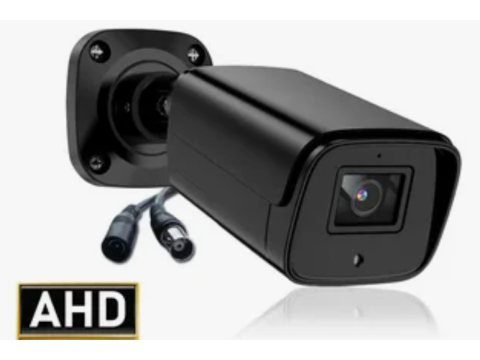What’s the Deal with AHD Surveillance?
First off, AHD stands for Analog High Definition—yep, we’re talking high-def video but with old-school analog tech. The cool thing? You don’t need to rip out all those cables from your existing setup to get crystal-clear footage.
With AHD, you’re looking at two standard resolutions:
- 720p (1280 x 720 pixels) — That’s about 1 megapixel.
- 1080p (1920 x 1080 pixels) — Full HD, baby, clocking in at around 2.1 megapixels.
If you’ve got coaxial cables or even twisted-pair wires, AHD cameras can work their magic over distances up to 1,640 feet (500 meters). No need for extra gear in the middle, either. Plus, this tech plays nice with older analog cameras AND supports IP cameras if you’re feeling fancy.
Why Bother with AHD?
Here’s the kicker: AHD gear is budget-friendly and keeps things simple. You get solid HD quality without the headache of pricey upgrades. It’s perfect for places like:
- Homes and apartments (easy to set up and low maintenance).
- Small businesses (affordable security).
- Industrial sites (super reliable, even with interference).
Oh, and if you’re worried about lag? AHD cameras stream at real-time speeds—25 fps (frames per second)—with zero delays. That’s smoother than most entry-level IP systems.
AHD Cameras: Styles & Features
You’ve got options for days when it comes to AHD cameras. Here are the most popular styles:
- Dome cameras (great indoors).
- Bullet cameras (weather-resistant for outdoor use).
- PTZ cameras (pan, tilt, and zoom for ultimate control).
Prices range from $40 for basic models to $800+ for high-end PTZ units. Got outdoor needs? Look for models with weatherproofing (IP67 or higher) and built-in IR for night vision.
AHD vs. IP Cameras: The Showdown
Not sure whether to go AHD or IP? Let’s break it down:
Resolution
AHD gives you up to 1080p, which is enough for most homes or businesses. Sure, IP cameras can hit crazy-high resolutions, but do you really need 4K just to catch your neighbor stealing your Amazon package?Cost
AHD wins here. It’s cheaper, period. Plus, you don’t need extras like network switches.Setup
Got existing analog wiring? Stick with AHD—it’s plug-and-play. But if you’re starting from scratch or need wireless? IP might be worth the splurge.Functionality
IP systems have more bells and whistles (like mobile access), but AHD can still handle basics like remote viewing via DVRs.
Final Word
If you’re upgrading an older setup or just need solid security without going broke, AHD is the way to go. It’s simple, reliable, and gets the job done. Got a bigger budget and want all the fancy features? Then maybe it’s time to give IP a shot.

